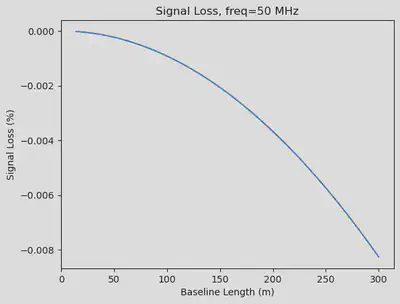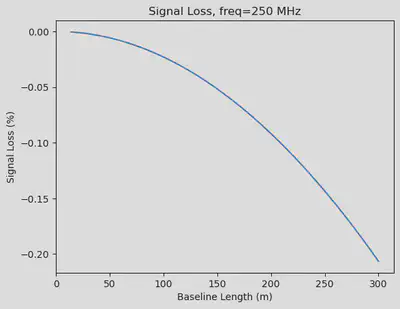Effect of Snapshot Integration
I was recently wondering what the effect of snapshot integration is on the power spectrum. I think I have a good handle on it now, but I wanted to write it down for posterity.
The TLDR here is that if you integrate your radio interferometer for some amount of time,
the sky rotates overhead, which decoheres the Fourier modes. My original shocking realization
was that the 10sec of integration that HERA has corresponds to about 6.5 Mpc at
Let the sky temperature be
The fourier transform
And the power is
Now, let’s assume that the sky is rotating in the
From here, let’s use the Fourier Shift Theorem:
Taking the power, we get then
This is
Now, for HERA, which has an integration time of 10 seconds, and a declination of
which is
On the other hand,
So,
def pdim(xk):
return (1 - np.cos(2*np.pi*xk))/(2*np.pi**2 * xk**2)
xk = np.linspace(0, 1, 100)
def plot_signal_loss(nu):
b = np.linspace(14, 300, 100)
u = b / (300 / nu)
xk = np.cos(np.pi/6) * 10/86400 * u
plt.plot(b, 100*(pdim(xk) - 1))
plt.xlabel("Baseline Length (m)")
plt.ylabel("Signal Loss (%)")
plt.title(f"Signal Loss, freq={nu} MHz")
plot_signal_loss(nu = 50)

plot_signal_loss(250)
